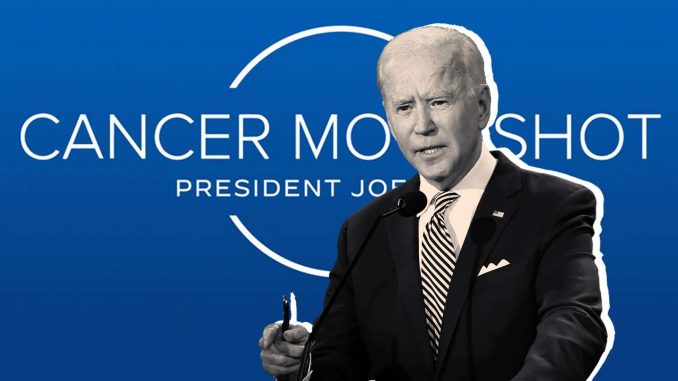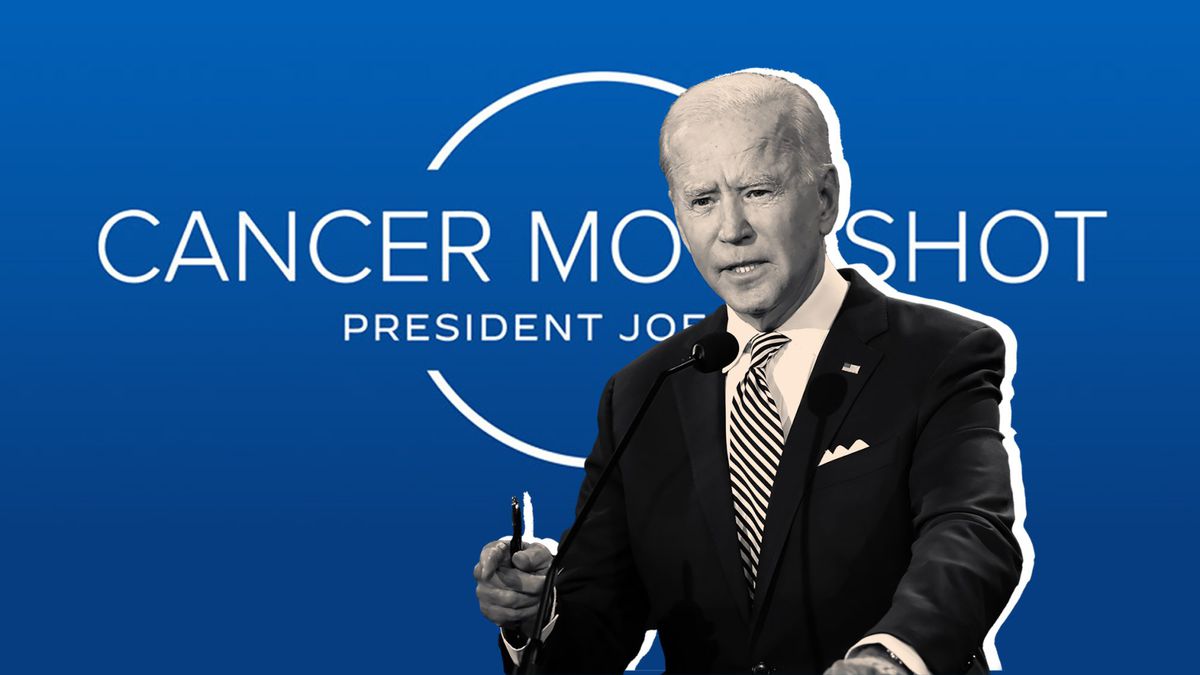


President Joe Biden recently announced that his administration will relaunch the federal government's Cancer Moonshot initiative with an ambitious goal: to reduce the rate of deaths from the disease by 50% over the next 25 years.
The COVID-19 pandemic may have been at least partially involved in the relaunch—the revamped initiative will reportedly include a greater focus on cancer screenings, many of which were missed due to lockdowns and other restrictions. "This is a presidential White House priority," Biden said in a news conference announcing the relaunch.
The first-ever "moonshot" rhetoric applied to ending cancer came from Richard Nixon in 1971, urging that "the same kind of concentrated effort … that took man to the moon should be turned toward conquering this dread disease," as reported by STAT News. In 2016, then-Vice President Biden launched the first official Cancer Moonshot initiative with the goal of accelerating scientific discoveries surrounding cancer.
Biden's rebooted Cancer Moonshot initiative expands on previous administrations' cancer-ending goals. In addition to the initiative's "call to action on cancer screening," the program will also aim to address the inequities people face in regards to screening, diagnoses, and treatment options.
"While it's an ambitious goal, it's doable," Karen Winkfield, MD, PhD, a radiation oncologist and member of President Biden's National Cancer Advisory Board, tells Health. "Over the past 20 years, the cancer death rate has dropped by 25%. And the type of technology we have now will revolutionize our ability to not only improve the types of screening that are done but also when we are able to detect cancers."
What has the Cancer Moonshot initiative already done—and what does it plan to do?
Since its start in 2016, the Cancer Moonshot has supported more than 240 and more than 70 consortiums or programs, the National Cancer Institute (NCI) says. Those programs have paved the way for improvements in immunotherapy, pediatric cancer research, tumor mapping, and addressing drug resistance in cancer treatment, among others.
In reigniting the Cancer Moonshot initiative, the Biden administration has brought new goals to the table: to reduce the death rate from cancer by 50% over the next 25 years, and to improve the experience not only of those living with cancer, but for their families as well. This is all with hope of "end[ing] cancer as we know it today."
To meet those goals, the Biden administration—with help from a White House Cancer Moonshot coordinator and a Cancer Cabinet—plans to address some key strategies in regards to cancer diagnosis and prevention, inequities, treatments, research, and support for patients and families dealing with a diagnosis.
Increased access to cancer screenings, through more at-home screening and mobile screening options, can help with detecting cancers at earlier stages, especially in those for whom hospitals or clinics aren't nearby. That push is especially important right now, given the current circumstances: The Centers for Disease Control and Prevention reported more than an 80% drop in both breast and cervical cancer screenings in 2020, and more than half of oncologists for all types of cancer found delays in screening led to more diagnoses of late-stage cancers.
But the COVID-19 pandemic has opened up opportunities, too—particularly with cancer prevention and the mRNA technology scientists have harnessed for vaccines. That same technology, the White House says, could eventually be used to stop cancer cells as soon as they appear in the body. And there will be more of a push to eliminate cervical cancer, which is largely preventable through HPV vaccination.
For cancers that aren't potentially preventable or easily screened for, Dr. Winkfield notes that blood tests that could detect multiple cancers at once—an impossible thought just five years ago, the White House says—may be more in reach now, due to expanding technologies. More advanced treatment options may be on the table too, especially now that the COVID-19 pandemic has shown that clinical trials can move at a faster pace without additional risks like compromised safety or effectiveness.
Are there any roadblocks for the Cancer Moonshot initiative?
The Cancer Moonshot initiative has the ability to revolutionize cancer care for the 1.6 million people in the US living with cancer, Dr. Winkfield says. But as of right now, there is no approved additional funding for the initiative.
The NCI says the 21st Century Cares Act—originally signed into law in December 2016—allotted $1.8 billion in funds for the Cancer Moonshot initiative over the course of seven years. According to the most recent data, the initiative has about $400 million left in funding.
In its Cancer Moonshot fact sheet, the White House also mentions the proposal for the establishment of an Advanced Research Projects Agency for Health (ARPA-H). It seeks $6.5 billion over three years to "drive biomedical breakthroughs—ranging from molecular to societal—that would provide transformative solutions for all patients." But any bills that would fund this project are currently pending in congress.
Santosh Kesari, MD, PhD, a neuro-oncologist and director of neuro-oncology at Providence Saint John's Health Center, says that funding cancer research and drug development will be costly at first, but that people should view it as a long-term investment. He says that the new treatments and expansion in screenings will eventually result in more cost-effective treatments because earlier cancers are easier to treat than later cancers.
"I think that's why the goal is not too ambitious because we're looking at results after 25 years instead of 1 year. The cost savings are going to be later not immediately," Dr. Kesari tells Health. Over time "we'll catch a lot of early cancers and it's going to mean less work, less surgery, and less aggressive radiation or chemotherapy."
Not only will President Biden need to pass additional funds beyond the initial $1.8 billion, he will likely need to secure funds on a yearly basis. In 2019 alone, the NCI spent a range of $14.8 million to $545.4 million per cancer.
Though there isn't much that the general public can do or benefit from right now, the Biden administration is encouraging everyone to share their personal cancer stories and offer suggestions on how the government should focus its efforts.
"As part of the mission to reduce deadly cancer, we must also improve patient experiences. What are people's experiences when they walk into a cancer center, a hospital, or an infusion center? When they're working with their surgeon? We can only do better when we're listening to the patient," says Dr. Winkfield. "We have an opportunity to move forward collectively to do something about a disease that has been impacting extraordinary numbers of individuals every single year."
Source: Read Full Article